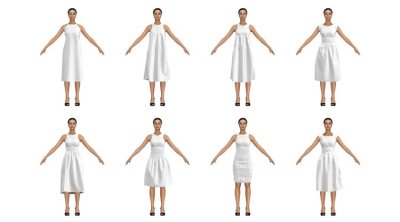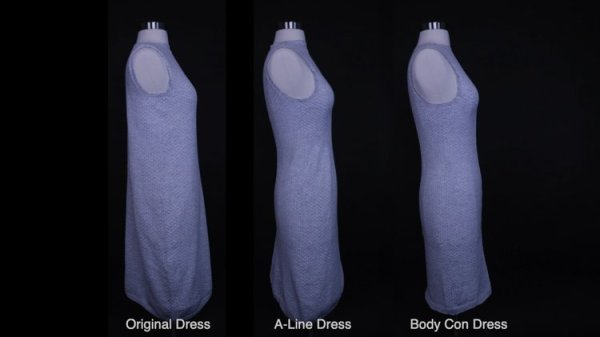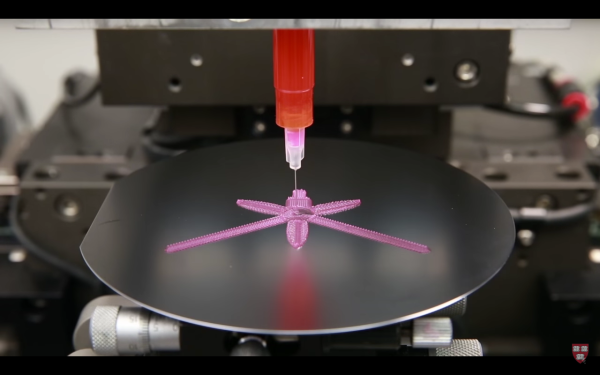Regular 2D sewing of anything is inherently wasteful. You can align the pattern pieces however you want, but there’s going to be wasted everything — thread, fabric, and interfacing — whether you get it right the first time or not. Never mind the fact that people tend to create a muslin (prototype) first using inexpensive fabric (like muslin) for the purposes of getting the fit right.

The MIT Self-Assembly Lab x Ministry of Supply have come up with a 4D garment construction technique that minimizes waste while being pretty darn cool at the same time. They’ve created a knit dress that combines several techniques and tools, including heat-activated yarns, computerized knitting, and 6-axis robotic activation. The result is a dress that can be permanently molded to fit the body however and wherever you want, using a heat gun mounted on a 6-axis robotic arm.
As far as we can tell, a finished dress does not come off of the machine in the short demo video after the break. It looks like it still has to be sewn together, which creates some potential for waste, but absolutely nothing like conventional methods.
This is probably the coolest dress we’ve seen since the one covered in LCD panels.














